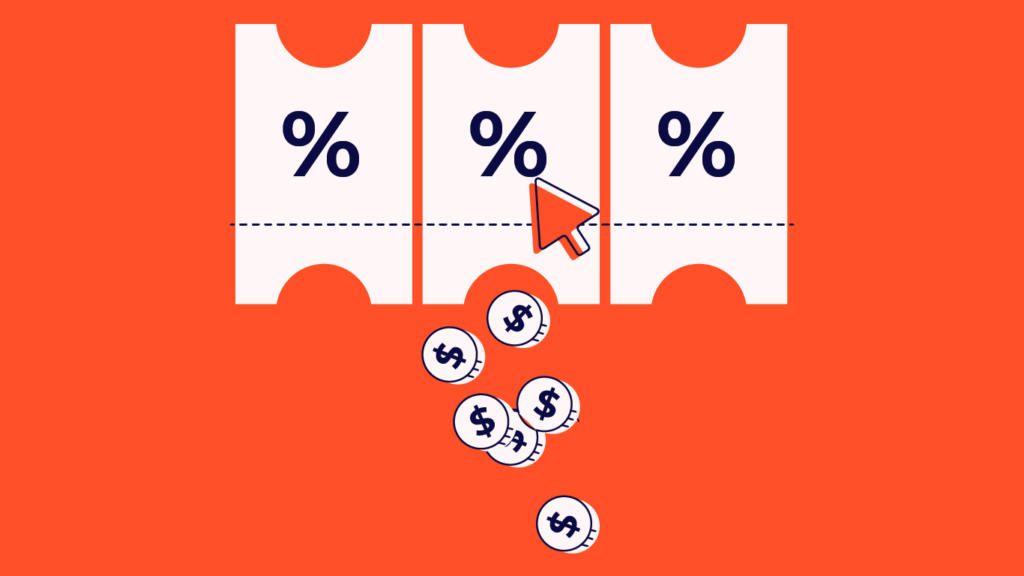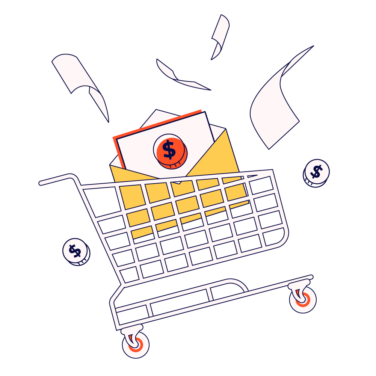The value of data and statistics is not lost on eCommerce managers – there’s no doubt some of you dream in percentage symbols and decimals (no? just us?).
You’re up to date on your company’s conversion rates, average daily sales, and site traffic, but what about industry-wide statistics and trends?
Keeping up with eCommerce statistics and eCommerce trends is crucial to keeping pace with the biggest eCommerce companies, as well as your local competition. Make sure they aren’t getting a leg up on you with our eCommerce statistics roundup from the latest eCommerce studies and eCommerce reports!
Keep reading for eCommerce statistics on:
- Ecommerce Growth
- Ecommerce Industry
- Online Shopping
- Ecommerce Marketing
- Ecommerce Design
- Conversion Rate
- Abandoned Cart
- Customer Reviews
- B2B Ecommerce
- Amazon
Ecommerce Growth Statistics
Stop us if you’ve heard this before – eCommerce is booming and there’s no end in sight. Ecommerce sales are expected to encroach on in-store sales more and more as we head into the new decade. These statistics on eCommerce growth can help you benchmark your business against others in the industry and make sure you’re getting your slice of the eCommerce pie.
- Global eCommerce sales are expected to reach $6.542 trillion USD by the end of 2022. (Statista)
- Customers aren’t as ad-adverse as you might think – almost 60% of online shoppers like to receive deals, offers, or discounts as they shop. (Accenture)
- The referral of users from social media to retail websites has increased by 110% between 2017 and 2019. (eMarketer)
Ecommerce Industry Statistics
Customer preferences are changing as the eCommerce industry grows – both in online shopping habits and the values, we use to choose certain brands over others. Make sure your company provides the options that customers want. The eCommerce industry moves fast and preferences change quickly – have you caught on to the trends in the eCommerce statistics below?
- 20% of consumers are more inclined to purchase items from companies with sustainable business practices. (Walker Sands)
- More shoppers are using voice devices to shop online – 51% use them to research and compare items, and 22% use them to complete their order. (Narvar)
- 17% of eCommerce shoppers currently use or intend to use AR or VR to shop online. (Narvar)
Online Shopping Statistics
As eCommerce continues to thrive, online shopping habits have changed. People are shopping in the most convenient, cost-effective, and efficient ways possible. The eCommerce statistics prove that companies that provide this convenience, cost-effectiveness, and efficiency do better business. For fashion eCommerce and other retail sectors, the stats below will be particularly insightful – bookmark them for your next eCommerce strategy.
- 79% of customers stated that free shipping would lead them to shop online more often. (Walker Sands)
- In 2018, 44% of online shoppers received an item with same-day delivery. (Walker Sands)
- 41% of online shoppers engage in “bracketing” – purchasing multiples of items in various sizes or colors to try at home with the intent of returning unneeded items. (Narvar)
Ecommerce Marketing Statistics
If you’re not investing a good chunk of your eCommerce budget in eCommerce marketing, you’re missing out on bringing in new customers, keeping existing ones, and boosting that conversion rate. Shopping ads, email marketing, social media, retargeting ads, the list goes on. Marketing these days is industry-specific and it can be hard to generalize eCommerce statistics across industries, but the data below shows some overall trends to keep in mind.
- Online retailers that remind users of abandoned carts through email generate 6.76 sales per newsletter subscriber, compared to 4.55 for retailers that don’t use abandoned cart emails. (SmartrMail)
- The average conversion rate of Google Shopping Ads is 1.91%. The industry with the highest conversion rate is HVAC and climate control at 3.30%, while chemical and industrial has the lowest at 0.83% (WordStream)
- 54% of online shoppers used social media during their journey to purchase, including research, peruse, or place an order. (Walker Sands)
Ecommerce Design Statistics
Never underestimate the value of good eCommerce design – it will help users find what they are looking for, provide a smooth checkout process, and ultimately bring them back to your eCommerce platform. Be sure to follow UX best practices when creating product pages, carts, and checkout pages. The bad design could be costing you, customers – the eCommerce statistics here prove it.
- Websites that load too slowly can cost companies £1.73 billion (~$2.3 billion USD) per year in sales. (eConsultancy)
- 37% of B2B buyers left a company’s website due to substandard design or website navigation. (KoMarketing)
- 69% of B2B purchasers stated that long contact forms with too many fields would discourage them from filling them out. (KoMarketing)
Conversion Rate Statistics
Conversion rates are one of the most common KPIs for eCommerce. Marketers endlessly iterate and test landing pages, lead generation tools, and email campaigns for a conversion rate boost. Tried and true conversion rate tactics can help, but you need benchmarks to measure your company against your competitors and others in your industry. The below eCommerce statistics are a good place to start.
- The global conversion rate on desktop devices is 4.04%, compared to 1.88% on mobile devices. (SaleCycle)
- 41.32% of online retail conversions took place on mobile devices, and 51.39% of fashion conversions occurred on mobile. (SaleCycle)
- Of the total sessions on eCommerce websites in one study, 43.8% involved a user viewing a product, 14.5% involved a user adding an item to their cart, and 3.3% involved a user completing an order. (SaleCycle)
Abandoned Cart Statistics
Another important eCommerce KPI is abandoned cart statistics. If you know where users are dropping off in the checkout process, you can optimize it to keep users interested or find ways of following up with users to get them to return to their abandoned cart. The eCommerce statistics suggest that abandoned cart rates can be lowered with some effort and that there are some proven ways to go about this.
- 34% of users abandon their carts because they are browsing or conducting research, rather than intending to buy. (SaleCycle)
- Another study on cart abandonment found that after excluding browsing or researching, 23% abandoned their cart because checking out was too long or complicated. (Baymard Institute)
- Companies can boost their conversion rates by up to 35.26% by creating a better UI/UX design for their checkout process. (Baymard Institute)
Curious about other eCommerce KPIs? Measure your eCommerce website with these KPIs!
Customer Reviews Statistics
Managing customer reviews on your website and products are crucial to a successful eCommerce strategy. More and more online shoppers are reading customer reviews before purchasing products, and good and bad reviews can make or break a customer’s decision to purchase. According to the eCommerce statistics, you can’t always prevent negative reviews, but you can attempt to mitigate them.
- 92.4% of eCommerce shoppers are more likely to purchase after reading a review of the product or service. (G2)
- 76% of online shoppers put as much trust in reviews as they do in advice from friends and family. (BrightLocal)
- Of consumers who read reviews, 97% also read company responses to reviews. (BrightLocal)
Keep your customers satisfied throughout the sales cycle with the help of Ecommerce CRM Software. Here are 16 Stats That Prove The Benefits Of Ecommerce CRM that you're going to want to see.
B2B Ecommerce Statistics
B2B can be overlooked when it comes to eCommerce. Online shopping tends to conjure images of virtual shopping carts filled with clothes, books, and electronics rather than SaaS or industrial machinery. If you’re in B2B eCommerce, you know that B2B purchasers are looking for something different than their consumer counterparts. These eCommerce statistics will help you discover it so you can convert more of your target audience.
- 78.4% of B2B eCommerce shoppers use Amazon Business, while 36.5% use Alibaba. (eMarketer)
- 64% of B2B buyers want to find contact information on the homepage of a potential vendor’s website, while 52% want company information or an about section. (KoMarketing)
- 55% of B2B purchasers stated that a vendor’s blog helped establish the vendor’s credibility always or sometimes. (KoMarketing)
Something else that gets overlooked – the role of social channels in finding new B2B customers.
Amazon Statistics
You can’t talk about eCommerce these days without talking about Amazon. It’s the platform that sets the metrics that other eCommerce websites measure themselves against. Online shoppers love the convenience, variety, and of course, same-day shipping. While your company may not be on par with Amazon (yet!), these Amazon sales statistics can inspire and motivate you to create a successful eCommerce business plan.
- 41% of online shoppers receive 1-2 purchases from Amazon per week. For online shoppers between the ages of 26-35, it is 57%. (Walker Sands)
- 29% of online shoppers look forward to further growth of Amazon, as they believe it will provide them with easier online shopping. (Walker Sands)
- Amazon shoppers are more satisfied with returns compared to other online shoppers – 75% of Amazon shoppers were satisfied compared to 65% of other online shoppers, even though amazon shoppers had to put more effort, like printing a return label, into the return. (Narvar)
What’s Next In Ecomm?
Building an eCommerce strategy or working in the industry without regularly consulting Ecommerce statistics, trends, and data is like working blindfolded. Get a clear view of the industry and how you stack up against your competitors using the eCommerce statistics above and employing the best ecommerce CRM strategies.
You can never go wrong with eCommerce best practices, but be sure to keep up as these are always changing. Follow the industry pros on our list of eCommerce experts to stay informed, or subscribe to our newsletter to get the latest right to your inbox!


